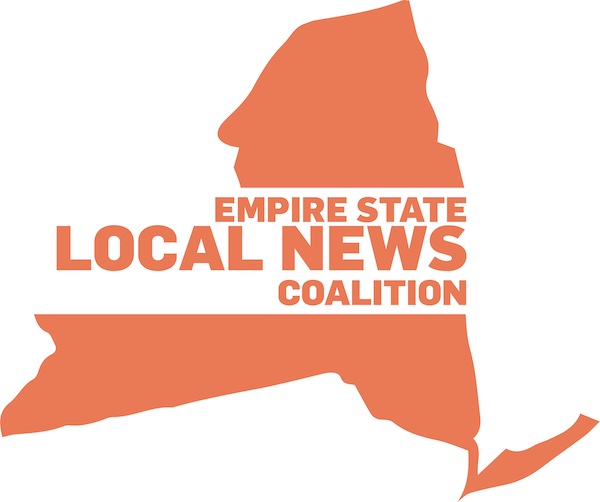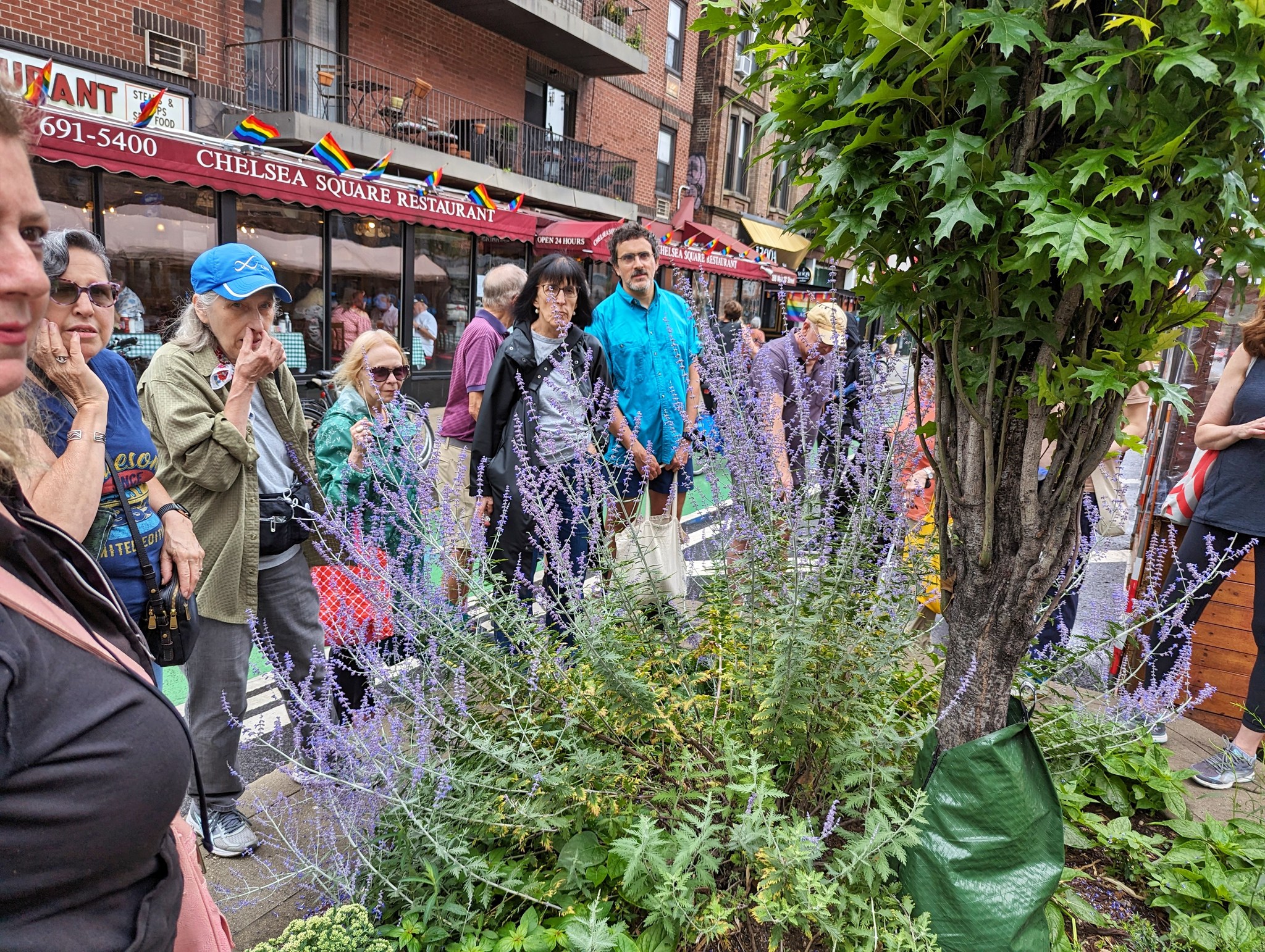
BY SCOTT STIFFLER | What do the bald eagle, gray wolf, and American peregrine falcon have in common? Well, besides a reputation for majestic poses based largely on postage stamps bearing their illustrated likeness, “Each faced the brink of extinction and have now rebounded,” crowed a December 28, 2023 featured content article published to coincide with the 50th anniversary of theEndangered Species Act.
Fast forward to present-day Albany—where conservation-minded legislation of a different kind existsin the form of the Local Journalism Sustainability Act. First introduced in 2021, its sponsors—NYS Assemblymember Carrie Woerner (Saratoga-D) and Chelsea’s own NYS Senator Brad Hoylman-Sigal (Manhattan-D/WFP)—have succeeded in making the Act part of the NYS Senate’s One House budget resolution. With the budget passage deadline of April 1 fast approaching, lawmakers and NYS Governor Hochul continue to negotiate behind closed doors, while advocates on the local levels work to ensure the Sustainability Act doesn’t go the way of the dodo.
This legislative approach to conservation comes at time when heavy losses have already left their mark on community-based journalism. “More than 3,000 newspapers have shuttered across the country since 2004—and New York newspapers have been particularly hard hit,” reads a March 19 press alert from the recently formed Empire State Local News Coalition (a statewide advocacy group comprised of 150+ local print and digital newspapers). Since 2004, notes the Coalition, New York’s statewide newspaper count went from 501 to 260 (30 of those losses happening in 2022 alone). “A quarter of New York’s counties are down to their last newspaper,” the Coalition’s alert states, adding, “Orleans County recently became the first in the state to have none.”
Among the top contributing factors when a newspaper ceases publication is the sharp decline in advertising revenue. Add to that the pandemic era’s mass exodus of advertisers—concert, sporting, and entertainment events, churches, restaurants, theaters, and bars—whose combined business had long been the bread and butter of the hometown newspaper’s bottom line. Paid subscriptions have also dwindled, alongside a steady rise in competition from online destinations where news, like so many other things, is free for the taking.
In its current form, the Act establishes a refundable tax credit to news organizations with 100 or fewer journalists (50% tax credit against the first $50,000 of an employee’s salary, capped at $200,000 in total). Statewide, the cap is $20 million. Eligible print, digital, and broadcast news outlets must be in existence for at least one year, focus on local news, and employ at least one journalist whose output is exclusive to the outlet’s area of coverage. (Said the New York Press Association (NYPA) in a March 18 email to its membership, “Remember, this is a refundable tax credit, meaning that you can benefit from the entire credit even if you have zero tax liability.”)
Julie Fedler, ad director at Capital Region Independent Media (a Local News Coalition member), recalled that “While we are proud we haven’t missed an issue since COVID, we all know that local newspaper subscriptions were already dwindling. Having less local reporters hasn’t inspired new subscribers, but we pivot and continue to strive to serve our communities.” Passage of the Sustainability Act, says Fedler, “would put feet on the street to engage with our communities, to deliver our people the news they deserve, and to give them a voice.”
This projected result is of particular interest to Sustainability Act co-sponsor Senator Hoylman-Sigal, who says the decline of state capital-assigned reporters over the years has made local media’s role more important than ever. “Community news outlets,” he notes, allow electeds to “communicate with constituents about the work we do” while “shining a bright light on government that holds us accountable. What we do in Albany needs to be scrutinized.”
 That checks and balances dynamic must remain alive and well, opines Empire State Local News Coalition founder Zachary Richner. Speaking at a March 20 rally that saw supporters take their message to the State Capital, Richner remarked, “Hometown papers deliver the hyperlocal updates and investigations necessary to sustain a community’s civic and financial well-being.” As local news declines, said Richner, “critical stories are lost, and communities become more polarized. We’re proud to have the Senate’s support and we call on Governor Hochul and the Assembly to support this industry-saving bill and protect critical newsroom jobs.”
That checks and balances dynamic must remain alive and well, opines Empire State Local News Coalition founder Zachary Richner. Speaking at a March 20 rally that saw supporters take their message to the State Capital, Richner remarked, “Hometown papers deliver the hyperlocal updates and investigations necessary to sustain a community’s civic and financial well-being.” As local news declines, said Richner, “critical stories are lost, and communities become more polarized. We’re proud to have the Senate’s support and we call on Governor Hochul and the Assembly to support this industry-saving bill and protect critical newsroom jobs.”
But will the electeds capable of seeing the proposed legislation clear its final hurdle heed the call? “I think my colleagues, thankfully, recognized the importance of local journalism to our democracy—and it’s a profound recognition,” said Hoylman-Sigal, of recent converts whose support helped the Sustainability Act gain inclusion in the One House budget resolution.
One path of persuasion Hoylman-Sigal cited as effective had a classic “fair’s fair” appeal to his thus-far reluctant colleagues. “I made the case [for the Sustainability Act] in conference,” he recalled, by invoking the 2022 passage of New York State’s first-ever $25 Million tax credit for digital game development. “That was a similar tax credit,” said the Senator. “My argument [in conference] was, ‘Great. We all want digital gaming to prosper in New York—but I’d much rather have a solid reporter employed.’ I think that was helpful [in securing new supporters].” Additionally, says Hoylman-Sigal, there’s been “much public awareness around challenges of local journalism,” as publications shrink page counts as well as the scope of their coverage.
And with a presidential election looming that could actually a return to the days of long red ties and throne rooms offering a staggering selection of classified reading material, “We need to have educated, informed voters. That is short-circuited by media consolidation and the closure of local publications,” said Hoylman-Sigal. “What’s more, he added, “We cannot rely on big media outlets to cover New York State or New York City, frankly.” Speaking at the March 20 rally, the Senator said community-focused journalism has added resonance—and relevance—at a time when “We have large publications that are shutting down their local coverage. Remember when there used to be a Metro section in the New York Times?”
Hoylman-Sigal’s co-sponsor of the Sustainability Act, Assemblymember Carrie Woerner, noted other bedrock strengths of the local paper that larger publications have scaled back or given up on. “Whether small towns or big cities, New Yorkers need local journalism to reliably monitor and report on uniquely local concerns,” she said, “from school board policy and the actions of municipal [community] boards to the volunteer organizations and activities that enrich our lives.”

Here in the namesake neighborhood of the online newspaper you’re currently reading, hyperlocal must-haves in league with what the Assemblymember spoke of include coverage of a news small business set to open, the local garden club’s annual walking tour, the death of a resident instrumental in the formation of a popular Chelsea destination, and—of course—the occasional fluff piece (puff piece) profiling a beloved neighborhood pooch. Built into the marrow of community reporting, this unique function merits support from many sources—advertising, grants, reader donations—and, yes, tax relief via legislation.
Says Terry Tuthill, president at New York Press Association (NYPA), “This [Sustainability Act] proposal, if approved, could be a game-changer for small and medium size news organizations, many of which are struggling to pay bills, keep valued employees and grow. We’re not asking for a bailout, just meaningful tax relief.”
Hoylman-Sigal says if all else fails, the “money talks” argument could be key to winning hearts and minds more likely to be motivated by the fact that healthy businesses are the best kind of taxpayers. “We hope the governor embraces it as an economic development initiative,” said Hoylman-Sigal. “This is its first time in the budget, so we need New Yorkers to call the governor and their elected reps to ensure that it’s in the final, enacted legislation.”
Support the New York Local Journalism Sustainability Act
—Contact New York State Governor Kathy Hochul at 518-474-8390 or click here to visit the governor’s website, and send a message by accessing the “Contact” page.
—Contact New York State Senator Brad Hoylman-Sigal at 212-633-8052 or hoylman@nysenate.gov.
—Contact New York State Assemblymember Tony Simone at 212-807-7900 or simonet@nyassembly.gov.
—Contact New York City Council Member Erik Bottcher at 212-564-7757 or District3@council.nyc.gov.
Chelsea Community News is a proud member of the Empire State Local News Coalition. For more info about the Coalition, including various ways to support it, visit SaveNYLocalNews.com.
—END—
Chelsea Community News is an independent, hyperlocal news, arts, events, info, and opinion website made possible with the help of our awesome advertisers and the support of our readers. Our Promise: Never a paywall, no pop-up ads, all content is FREE. With that in mind, if circumstances allow, please consider taking part in our GoFundMe campaign (click here). To make a direct donation, give feedback, send a Letter to the Editor, or contact our founder/editor, email Scott Stiffler via scott@chelseacommunitynews.com.
To join our subscriber list, click here. It’s a free service providing regular (weekly, at least) Enewsletters containing links to recently published content. Subscribers also will be sent email with “Sponsored Content” in the subject line. That means it’s an exclusive message from one of our advertisers, whose support, like yours, allows us to offer all content free of charge.

Pingback: FY 2025 NYS Budget Includes $90 Million Local Media Tax Credit - Chelsea Community News
Pingback: As Deadline Looms, Local Journalism Sustainability Act Advocates Seek FY’25 State Budget Inclusion | MIDTOWN SOUTH COMMUNITY COUNCIL